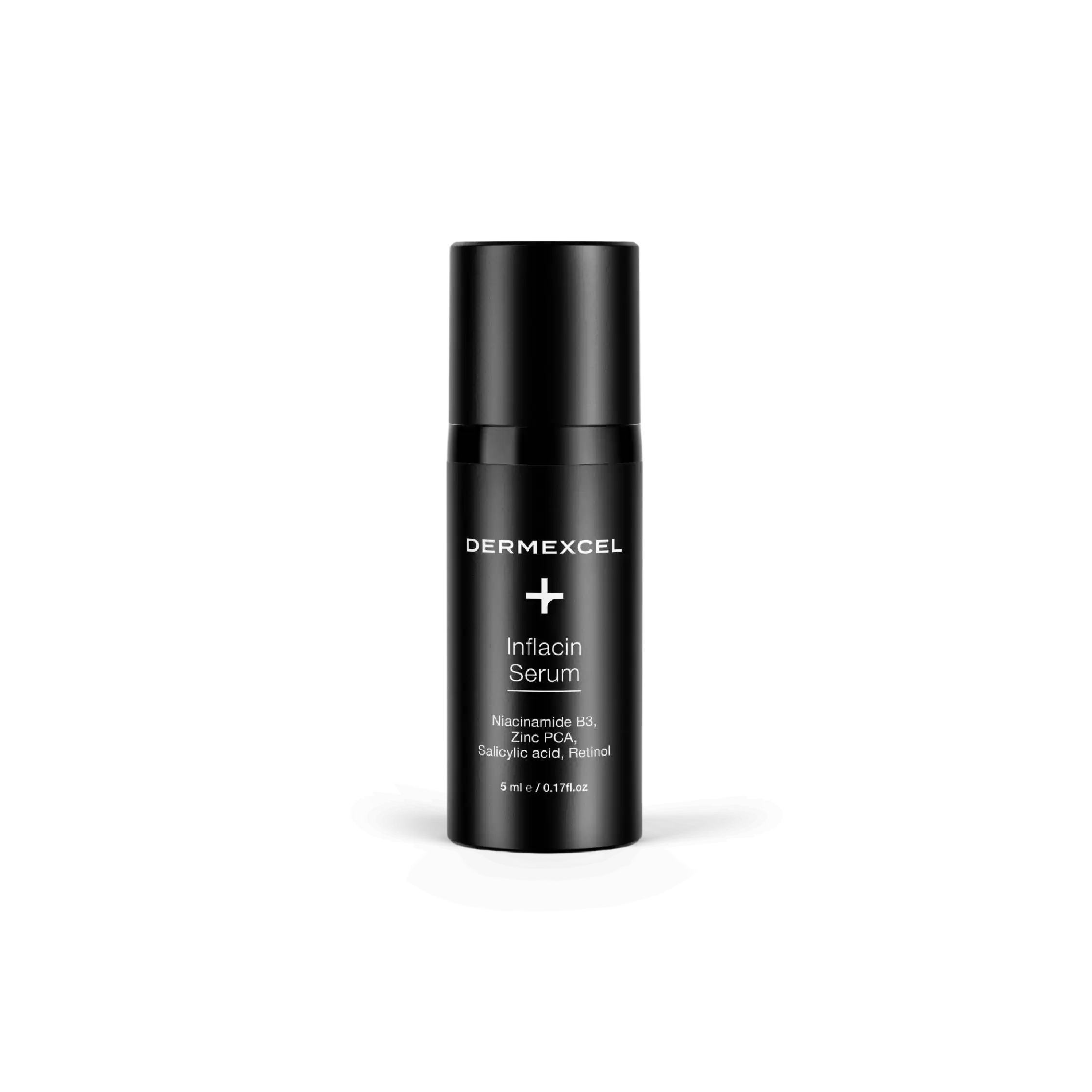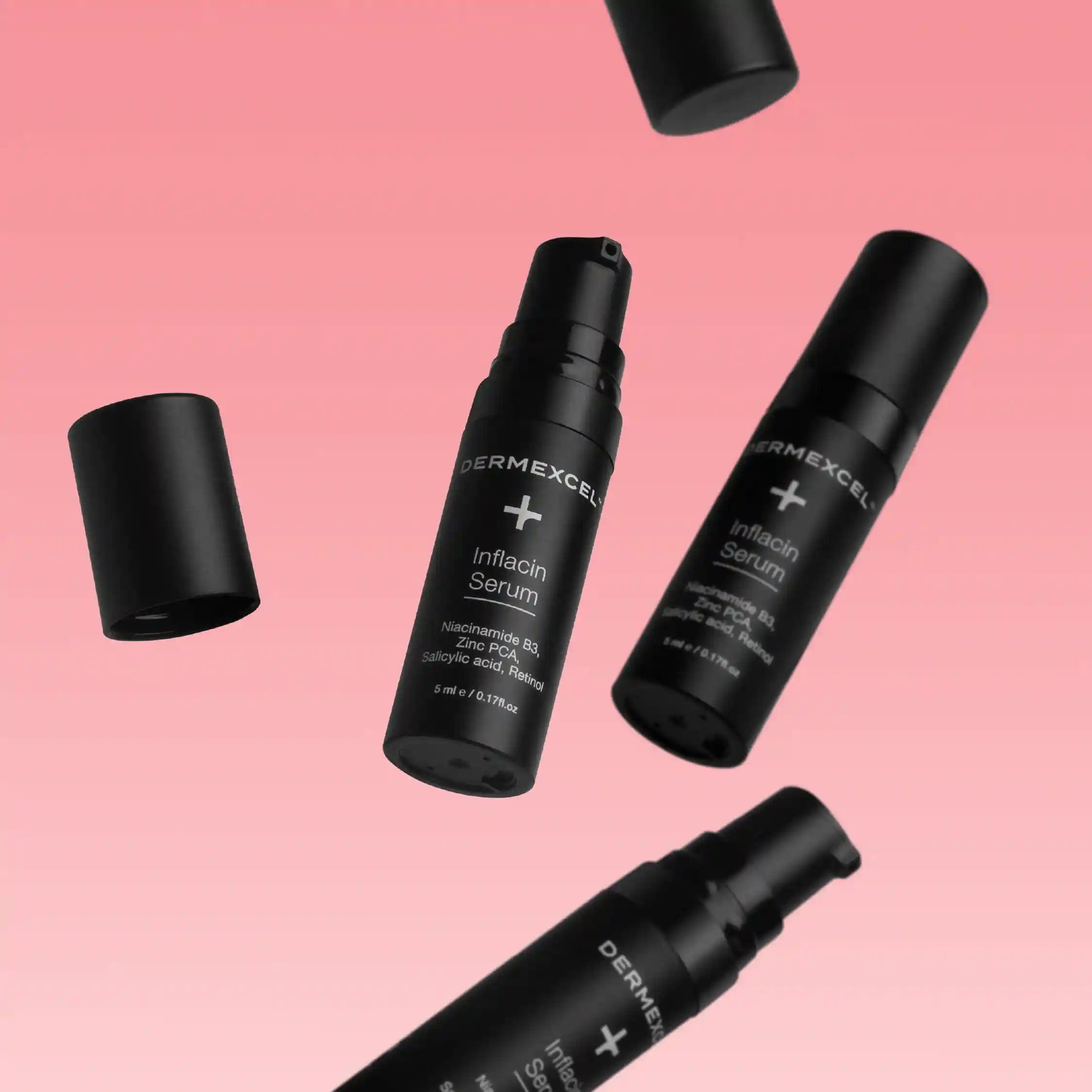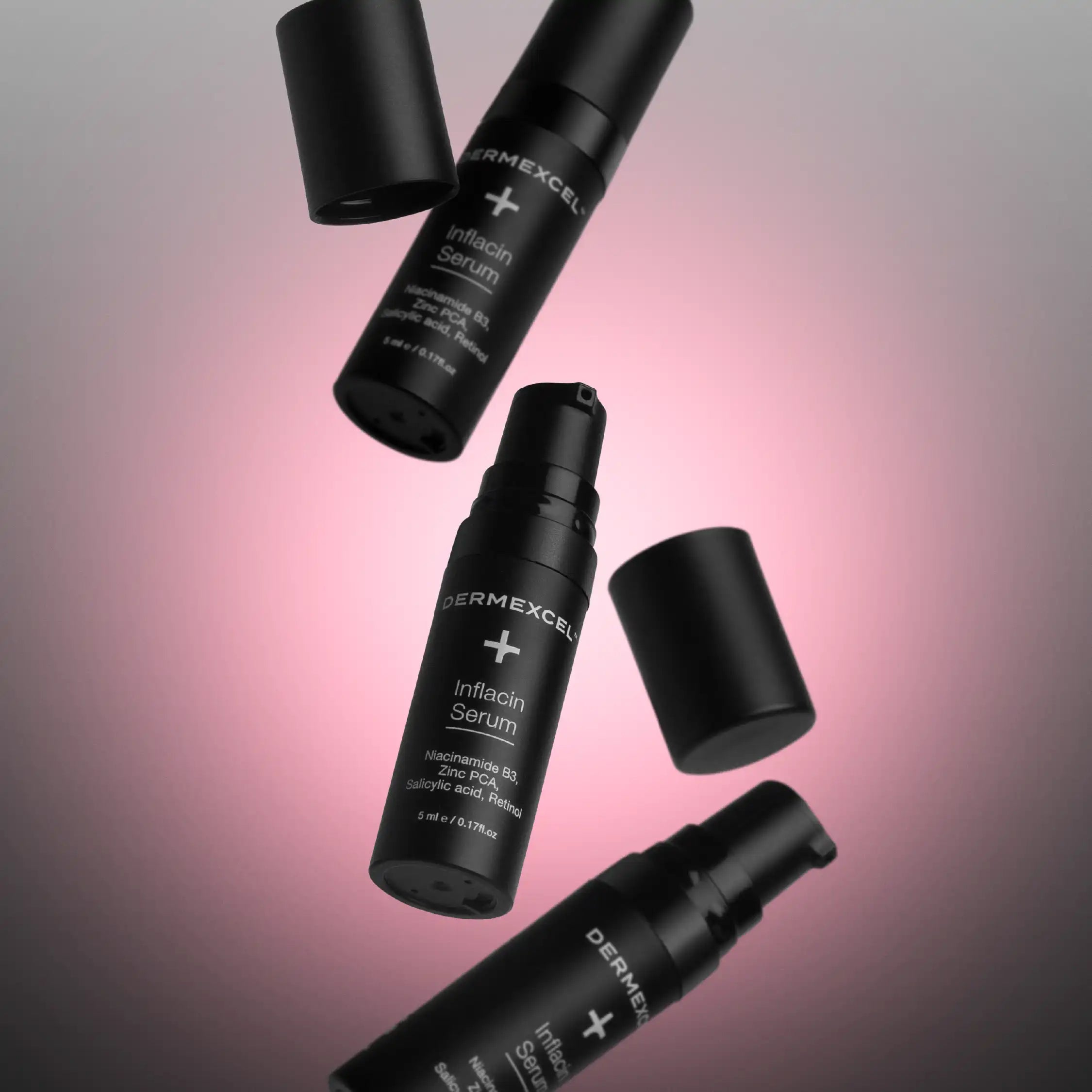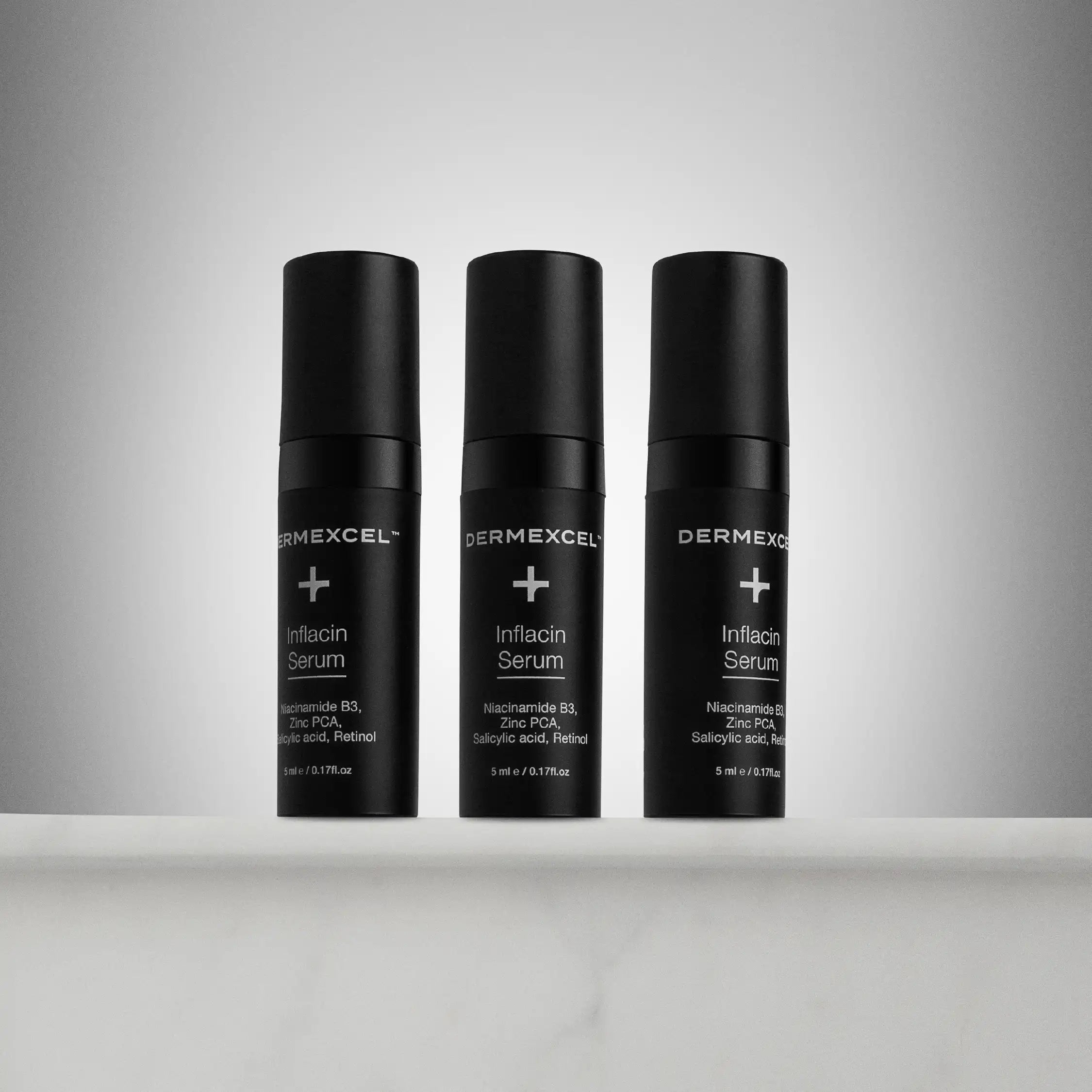







Pay interest-free installments from R 36.50 with various payment gateways selected at checkout.
SIZE: 5 mL




Choose options




Aqua, Polyethylene Glycol, Niacinamide, Salicylic acid, Sodium Acrylates Copolymer & Lecithin, Phenoxyethanol & Ethylhexylglycerin, Zinc PCA, Dimethyl Isosorbide & Hydroxypinacolone Retinoate, Sodium Phytate & Aqua & Alcohol, Butylene Glycol, Hydrolyzed Yeast Protein, Fomes Officinalis (Mushroom) Extract, Pyridoxine, Niacinamide, Panthenol, Allantoin, Threonine, Biotin, Tocopherol, Disodium EDTA
Inflacin Serum: Travel Size
product benefits
Sebum Regulation
Unblock clogged pores
Anti-inflammatory
Renew skin cells
Anti-Microbial
Reduce signs of aging
Indications for Inflacin Serum: Travel Size
blackheads
whiteheads
Clogged Pores
Enlarged Pores
Rough Skin Texture
Acne / Breakouts
Inflammation
Rosacea / Red Skin
Folliculitis
Pigmentation
Aging Skin
Sensitive Skin
Inflacin serum
Mode of action
Inflacin Serum: Travel Size
targets all phases of the acne process
| niacinamide | |
| zinc pca | |
| retinol | |
| salicylic acid |
| niacinamide | |
| zinc pca | |
| retinol | |
| salicylic acid |
| niacinamide | |
| zinc pca | |
| retinol | |
| salicylic acid |
| niacinamide | |
| zinc pca | |
| retinol | |
| salicylic acid |
| increased sebum | clogged pores | bacterial infiltration | inflammation | |
|---|---|---|---|---|
| niacinamide | ||||
| zinc pca | ||||
| retinol | ||||
| salicylic acid |
salicylic acid
pore clearing action
inflacin serum
mode of action on acne

REGULATE SEBUM (OIL) PRODUCTION AND EXCRETION
Salicylic acid; Niacinamide; Zinc; Retinol

PREVENT DEAD SKIN CELLS AND OIL BUILD-UP IN THE PORES
Salicylic acid; Retinol

Prevent bacterial infiltration
Salicylic acid; Niacinamide; Zinc; Retinol

DOWN-REGULATE THE INFLAMMATORY RESPONSE
Salicylic acid; Niacinamide; Zinc; Retinol
Rosacea
Stages and treatment objectives




mode of action
salicylic acid
rosacea and acne treatment

anti-inflammatory

Anti-bacterial

Comedolytic

Keratolytic
mode of action
zinc pca
rosacea and acne treatment

anti-bacterial

sebum (oil) regulator

anti-inflammatory
Testimonials


Not sure which products you need?
Find your regimen
Assessment
Submit your free Dermal Diagnosis™ Assessment
Treatment Plan
Receive your Free Personal Profile and Treatment Plan
Confident Skin
Start your Simple and Effective journey to Confident Skin!
















